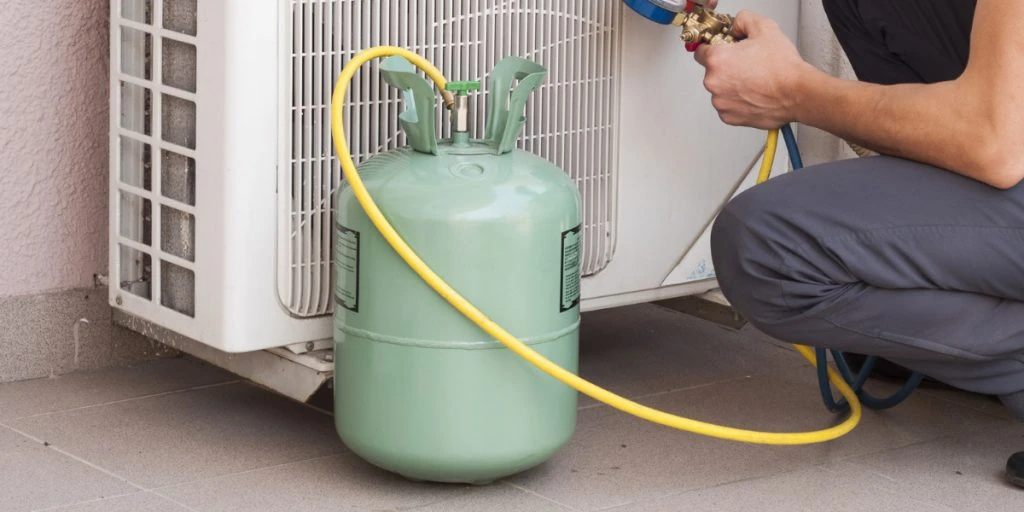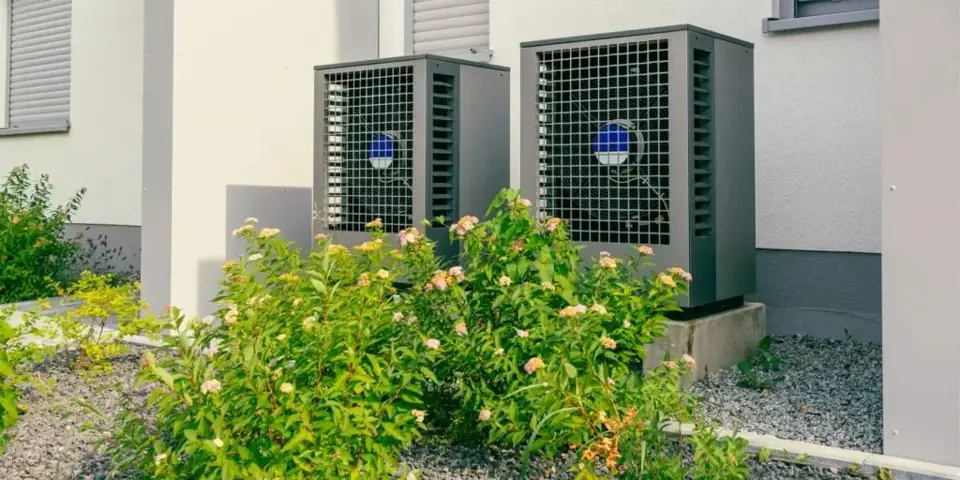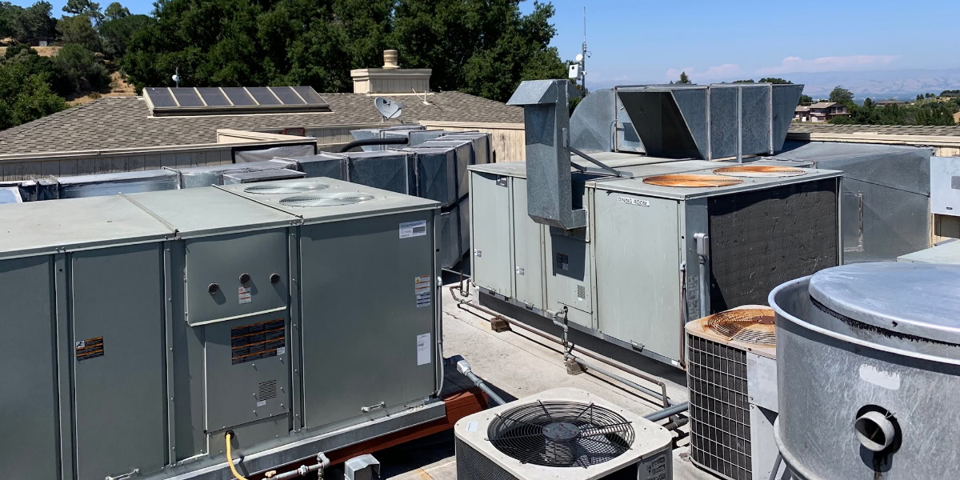Staying Compliant with EPA’s AIM Act for Commercial Refrigeration
As we move through 2025, commercial refrigeration is undergoing one of its most significant transformations in decades. At R&R Refrigeration and Air Conditioning, we’ve been serving the San Francisco Bay Area since 1958, and we’re here to help you navigate these important changes to keep your business compliant and running smoothly.
Whether you operate a restaurant, grocery store, convenience store, or any commercial facility with refrigeration needs in San Francisco, Santa Clara County, San Mateo County, or Alameda County, understanding the shift to A2L refrigerants and the latest EPA regulatory updates is crucial for your business planning and budgeting in 2025 and beyond.
Important Update: EPA Proposes Extension for Remote Walk-In Systems
Breaking News: On September 30th, 2025, the EPA issued a proposed change to the AIM Act that could significantly impact your refrigeration planning. If finalized, this proposal would extend the use of traditional refrigerants R448A and R449A in remote walk-in systems until 2032—a six-year extension from the original January 1, 2026 deadline.
This proposal is currently undergoing a 45-day public comment period and has not yet become law. Here’s what you need to know right now:
- As of today: Federal law still restricts installation of R448A/R449A systems beginning January 1, 2026
- If the proposal is finalized: These refrigerants would remain allowable in remote walk-ins until January 1, 2032
- Long-term outlook: All new remote systems will require lower-GWP refrigerants starting January 1, 2032, regardless of the proposal outcome
- State requirements may differ: States like California, Washington, and New York may continue to enforce stricter standards that could apply sooner than federal requirements
- Self-contained systems are unaffected: The original January 1, 2025 deadline for packaged systems remains in place
At R&R Refrigeration, we’re closely monitoring this proposed rule change and will keep our clients informed as it progresses through the regulatory process. However, we recommend planning for compliance with the current January 1, 2026 deadline until the proposal is officially finalized.
What is the AIM Act and Why Does It Matter?
The American Innovation and Manufacturing (AIM) Act, enacted in 2020, represents a landmark piece of environmental legislation that directs the Environmental Protection Agency (EPA) to phase down high-global warming potential (GWP) refrigerants. The goal is ambitious yet necessary: reduce greenhouse gas emissions by 85% by 2036. This legislation authorizes the EPA to implement comprehensive controls on the production, consumption, and use of hydrofluorocarbons (HFCs)—the refrigerants that have been industry standard for decades.
For business owners, this isn’t just about environmental responsibility—it’s about legal compliance. The AIM Act’s Technology Transitions Rule sets specific deadlines that directly impact when and how you can install new refrigeration equipment.
Key Compliance Deadlines You Need to Know:
January 1, 2025: Self-contained (packaged) refrigeration systems must meet new EPA guidelines. These are the standalone units you might see in convenience stores or smaller applications. The good news? Many modern packaged systems already comply with these requirements, utilizing propane (R290) refrigerant. Additionally, there’s a 3-year sell-through period allowed for older refrigerant inventory, providing some flexibility for existing stock.
January 1, 2026: This remains the current federal deadline for remote refrigeration systems—the type used in most restaurants, supermarkets, and larger commercial facilities. The rule currently prohibits the installation of new remote systems using refrigerants with a GWP greater than 300. Importantly, no sell-throughs are allowed with old refrigerants for remote systems under the current rule. However, the proposed EPA extension could change this timeline for remote walk-in systems specifically.
January 1, 2032: Under the EPA’s proposed rule change, this would become the final deadline for all new remote systems to transition to lower-GWP refrigerants, with no exceptions.
California's Stricter Standards: What Bay Area Businesses Must Know
Here’s a critical consideration for our Bay Area clients: California may enforce stricter refrigerant standards than federal requirements. The state has a history of implementing more aggressive environmental regulations ahead of federal mandates, and refrigerant regulations are no exception.
Even if the EPA’s proposed extension is finalized at the federal level, California could choose to maintain the original 2026 deadline or implement its own timeline. This means Bay Area businesses should not assume they’ll automatically benefit from any federal extension. We recommend staying in close contact with your refrigeration contractor and monitoring California Air Resources Board (CARB) announcements for state-specific guidance.
The Critical Distinction: "Installed" vs. "Operational"
Here’s an important nuance that many business owners and contractors are still learning about: “installed” and “operational” are considered two different milestones for EPA compliance purposes. Per the EPA final rule, refrigeration systems must be installed by the applicable deadline—but they don’t necessarily have to be operational by that date.
This distinction can be crucial for projects with tight timelines. For example, if your evaporators are hanging and your condenser is in place by the deadline, does that count as “installed” even if the system isn’t running yet? The answer depends on your local inspector, known as the Authority Having Jurisdiction (AHJ).
Interpretation can vary significantly by jurisdiction. Some areas, like New Jersey, are known for stricter enforcement and interpretation of these regulations. Other regions, such as Mississippi, have demonstrated more flexibility in their approach. This variability means that what’s acceptable in one Bay Area county might not fly in another.
If you’re planning a refrigeration project with a timeline that extends near the January 1, 2026 deadline (or any future deadline), we strongly recommend confirming compliance requirements with your general contractor and local AHJ well in advance. At R&R Refrigeration, we work closely with local inspectors throughout the Bay Area and can help you navigate these jurisdictional differences.
What Are A2L Refrigerants?
A2L refrigerants represent the next generation of cooling technology—environmentally friendlier while maintaining the performance commercial operations demand. But what exactly does “A2L” mean?
A2L is a classification system developed by ASHRAE (American Society of Heating, Refrigerating and Air-Conditioning Engineers), which categorizes refrigerants based on two key characteristics: toxicity and flammability.
A = Lower Toxicity: The “A” designation indicates that the refrigerant has low toxicity, meaning it’s generally safe for human exposure under typical operating conditions. This is important for commercial environments where employees and customers are present.
2L = Lower Flammability (Mildly Flammable): This is the defining characteristic of A2L refrigerants. While they are technically classified as flammable, they have a very low burning velocity. In practical terms, this means they are difficult to ignite under normal circumstances. If they do somehow ignite, they burn slowly and are likely to self-extinguish rather than sustaining combustion.
The most common A2L refrigerants you’ll encounter are R454A and R454C, which are becoming the industry standard for remote refrigeration systems. These refrigerants offer a GWP that’s approximately 80% lower than traditional HFC refrigerants like R404A, making them compliant with the AIM Act while delivering comparable cooling performance.
What Changes with A2L Refrigeration Systems?
Due to their mildly flammable classification, A2L refrigeration systems require several important modifications compared to traditional systems. These aren’t just minor tweaks—they represent fundamental changes in system design and safety features:
Leak Detection and Mitigation Systems
All evaporator coils in A2L systems must now be equipped with sophisticated leak detection and mitigation devices. These systems continuously monitor for refrigerant leaks and can automatically trigger safety responses if a leak is detected. This might include shutting down the system, activating ventilation, or alerting facility managers. While this adds complexity and cost to the system, it significantly enhances safety.
Rated Components Throughout the System
Every component in an A2L refrigeration system—fans, compressors, electrical connections, and other parts—must be specifically rated and certified for use with mildly flammable refrigerants. This means manufacturers have had to redesign and recertify virtually every component in their product lines. You can’t simply retrofit an old system with A2L refrigerant; the entire system must be designed from the ground up for A2L compatibility.
Enhanced Ventilation Requirements
Installation requirements for A2L systems often include enhanced ventilation in mechanical rooms and areas where refrigerant-containing equipment is located. This ensures that even in the unlikely event of a significant leak, refrigerant concentrations remain well below flammability thresholds.
These changes ensure safety while meeting environmental goals, but they also mean that A2L systems require specialized knowledge for installation, service, and maintenance. This is why choosing an experienced commercial refrigeration contractor like R&R Refrigeration is more important than ever.
The Refrigeration Solution Roadmap: Not One-Size-Fits-All
One of the most important things to understand about the post-2026 (or post-2032) refrigeration landscape is that there’s no longer a single refrigerant solution for all applications. The industry is transitioning to multiple refrigerant solutions based on system type, size, and application:
Packaged Systems (Self-Contained Units): Propane (R290) has become the standard for systems up to 1.75 horsepower. R290 is a natural refrigerant with excellent thermodynamic properties and an extremely low GWP. These systems, like the Capsule Pak R290, have been in production since 2022-2023 and are readily available as compliant, effective solutions. R290 is significantly more cost-effective for end users than alternatives in self-contained applications, and this deadline remains unchanged regardless of the proposed EPA extension.
R290, have been in production since 2022-2023 and are readily available as compliant, effective solutions. R290 is significantly more cost-effective for end users than alternatives in self-contained applications, and this deadline remains unchanged regardless of the proposed EPA extension.
Remote Systems (Small to Medium): A2L refrigerants (R454A & R454C) are the solution for remote systems ranging from 0.5 to 15 horsepower. These systems are ready now, though you should plan for extended lead times when ordering equipment. This is the category that affects most restaurants, small to medium grocery stores, and similar commercial operations. Depending on the EPA’s final decision and California’s stance, you may have until 2026 or 2032 to transition.
Large Remote Systems: For very large systems (5HP and above), carbon dioxide (CO2/R744A) solutions are becoming available, with widespread availability expected in Q1 2026. CO2 is an excellent refrigerant from an environmental perspective—it’s natural, non-toxic, and has a GWP of just 1. However, CO2 systems are more expensive, more complex to install, and require a higher level of technical skill to service and maintain. They operate at much higher pressures than traditional systems, requiring specialized components and expertise.
Navigating Uncertainty: Should You Wait or Transition Now?
With the EPA’s proposed extension creating uncertainty, many business owners are asking: should I wait to see if the extension is finalized, or should I proceed with transitioning to A2L systems?
Here’s our professional recommendation based on 65+ years of industry experience:
Consider Transitioning to A2L Now If:
- You’re in California or another state with potentially stricter standards
- Your current system is aging and needs replacement soon anyway
- You want to future-proof your investment (A2L will be required eventually)
- You’re building a new facility or doing major renovations
- You want to demonstrate environmental leadership in your industry
- Extended lead times mean you need to order equipment soon for a 2026 installation
You Might Wait If:
- Your current system is relatively new and functioning well
- You have confirmed your state will adopt the federal extension (once finalized)
- Your project timeline is flexible and can accommodate regulatory changes
- You’re willing to monitor the situation closely and act quickly once the rule is finalized
Important: Even if you decide to wait, start planning now. Understand your options, get preliminary quotes for both scenarios, and establish a relationship with a qualified contractor who can move quickly when you’re ready.
What This Means for Your Bay Area Business
If you’re planning any commercial refrigeration projects in the San Francisco, Santa Clara, San Mateo, or Alameda County areas, here’s what you need to know to stay compliant and avoid costly mistakes:
For Projects Installing Before January 1, 2026:
- You can still use current refrigerants (R448/R449) under federal law if your system is truly installed before the deadline
- Confirm your installation timeline with your contractor and get it in writing
- Ensure your local AHJ considers your system “installed” before the deadline—don’t assume; verify
- Monitor California-specific regulations, as the state may have different requirements
- Consider whether installing a legacy system makes sense long-term; parts and service for older refrigerant systems may become more expensive and harder to find over time
For Projects Installing After January 1, 2026:
- Under current federal law, you must use EPA-approved A2L refrigerants for remote refrigeration systems
- However, if the EPA’s proposed extension is finalized, you may be able to use R448A/R449A in remote walk-ins until 2032
- California may not adopt the federal extension, so Bay Area businesses should plan conservatively
- Plan for extended lead times when ordering A2L equipment; supply chains are still adjusting
- Budget accordingly—compliant A2L systems have different pricing than legacy equipment, typically higher due to additional safety components
- Ensure your contractor is trained and experienced with A2L systems; improper installation can create safety issues and void warranties
Quoting and Pricing Considerations
As we move through 2025 and into 2026, you may notice significant price variations when getting quotes from different contractors. Here’s why: some contractors may still be quoting legacy systems with older refrigerants (R448/R449), which can appear less expensive upfront. However, depending on when the EPA finalizes its proposed rule and what California decides, that quote could become invalid.
At R&R Refrigeration, we’re committed to transparency and keeping you informed. We’ll provide quotes for both A2L-compliant systems and traditional systems (where applicable), clearly explaining the regulatory landscape and risks associated with each option. This ensures you’re making an informed decision based on the latest information and your specific circumstances.
Why Choose R&R Refrigeration for Your Refrigeration Needs?
With over 65 years of experience serving the Bay Area, R&R Refrigeration and Air Conditioning has seen the refrigeration industry evolve through multiple technological transitions. We’ve been here since 1958, and we’ll be here to support your business through this transition and beyond.
Our specialties include:
- Walk-in cooler construction and installation: Custom-built solutions for restaurants, grocery stores, and commercial facilities
- Commercial refrigeration systems of all sizes: From small reach-in units to large-scale remote systems
- HVAC solutions for commercial applications: Complete climate control for your facility
- Compliance expertise: We stay ahead of EPA regulations, California requirements, and local code requirements
- A2L system expertise: Our technicians are fully trained on the latest A2L refrigerant systems
- Regulatory guidance: We monitor federal and state regulatory changes and help you understand how they affect your business
We stay ahead of industry changes to ensure your business remains compliant and your refrigeration systems operate efficiently and safely. Our team understands the nuances of A2L systems, California’s environmental standards, local Bay Area building codes, and the specific challenges of commercial refrigeration in our region.
Take Action Now: Stay Informed and Plan Ahead
Whether the EPA’s proposed extension is finalized or not, one thing is certain: the refrigeration industry is transitioning to lower-GWP refrigerants. The only question is timing. Don’t let regulatory uncertainty paralyze your planning.
If you’re planning any refrigeration projects for 2026 or beyond, contact R&R Refrigeration today to:
- Discuss your project timeline and compliance requirements: We’ll help you understand exactly what you need and when, considering both federal and California regulations
- Get accurate quotes for both traditional and A2L-compliant systems: Know your options and associated costs
- Understand the regulatory landscape: We’ll explain the current rules, proposed changes, and what they mean for your specific situation
- Receive ongoing updates: As the EPA’s proposal moves through the comment period and California announces its position, we’ll keep you informed
- Ensure your business stays ahead of regulatory changes: Compliance is our priority, and we’ll help you navigate uncertainty
Whether you’re building a new facility, expanding your existing operation, or replacing aging refrigeration equipment, R&R Refrigeration and Air Conditioning is your trusted partner for commercial refrigeration in the Bay Area.
Frequently Asked Questions About A2L Refrigerants
While the proposed extension could provide more time for the transition, we don’t recommend putting critical refrigeration projects on hold indefinitely. The proposal is still undergoing a 45-day comment period and hasn’t become law. Additionally, California may choose not to adopt the federal extension, meaning Bay Area businesses could still face the 2026 deadline. Our recommendation: proceed with your planning now, get quotes for both scenarios, and work with a contractor who can adapt as regulations evolve. If your current system is failing or you’re building new, don’t delay—A2L systems are proven, available, and will be compliant regardless of regulatory changes.
Yes, absolutely. The AIM Act regulations apply only to new installations of refrigeration systems. Your existing systems using refrigerants like R404A, R448A, or R449A can continue to operate and be serviced after any deadline. However, you should be aware that as the industry transitions away from these refrigerants, the cost and availability of older refrigerants may change over time. It’s wise to start planning for eventual replacement of older systems, but there’s no requirement to replace functioning equipment. Regular maintenance becomes even more important to extend the life of legacy systems.
Yes, A2L refrigerants are safe when systems are properly installed and maintained. The “A” classification means they have low toxicity, and the “2L” designation indicates they are only mildly flammable with a low burning velocity. The required leak detection systems, rated components, and enhanced ventilation requirements all work together to ensure safety. A2L refrigerants have been extensively tested and are approved by the EPA specifically because they meet rigorous safety standards. Millions of A2L systems are already operating safely worldwide. The safety features built into A2L systems actually make them safer than many traditional systems in the event of a leak.
A2L systems typically cost more than traditional systems due to the additional safety components (leak detection systems, rated components, enhanced controls) and the current market dynamics as the industry transitions. The exact price difference varies depending on system size and complexity, but business owners should generally expect a 10-30% increase in upfront costs. However, A2L refrigerants often have better energy efficiency, which can result in lower operating costs over time. Additionally, as A2L systems become the industry standard and production volumes increase, prices are expected to stabilize and potentially decrease. When evaluating costs, consider the total cost of ownership over the system’s lifespan, not just the initial purchase price.
This is a very real possibility that Bay Area businesses need to consider. California has a history of maintaining stricter environmental standards than federal requirements, particularly regarding air quality and greenhouse gas emissions. If California chooses not to adopt the federal extension (should it be finalized), businesses in our service area would still need to comply with the January 1, 2026 deadline for new remote system installations. This is why we recommend staying in close contact with your refrigeration contractor and monitoring announcements from the California Air Resources Board (CARB). At R&R Refrigeration, we’re tracking both federal and state developments and will immediately inform our clients of any California-specific requirements. When in doubt, planning for the earlier deadline is the safer approach.
Contact R&R Refrigeration and Air Conditioning to schedule a consultation about your commercial refrigeration needs and get the latest information on regulatory requirements. Proudly serving San Francisco, Santa Clara County, San Mateo County, and Alameda County since 1958.






